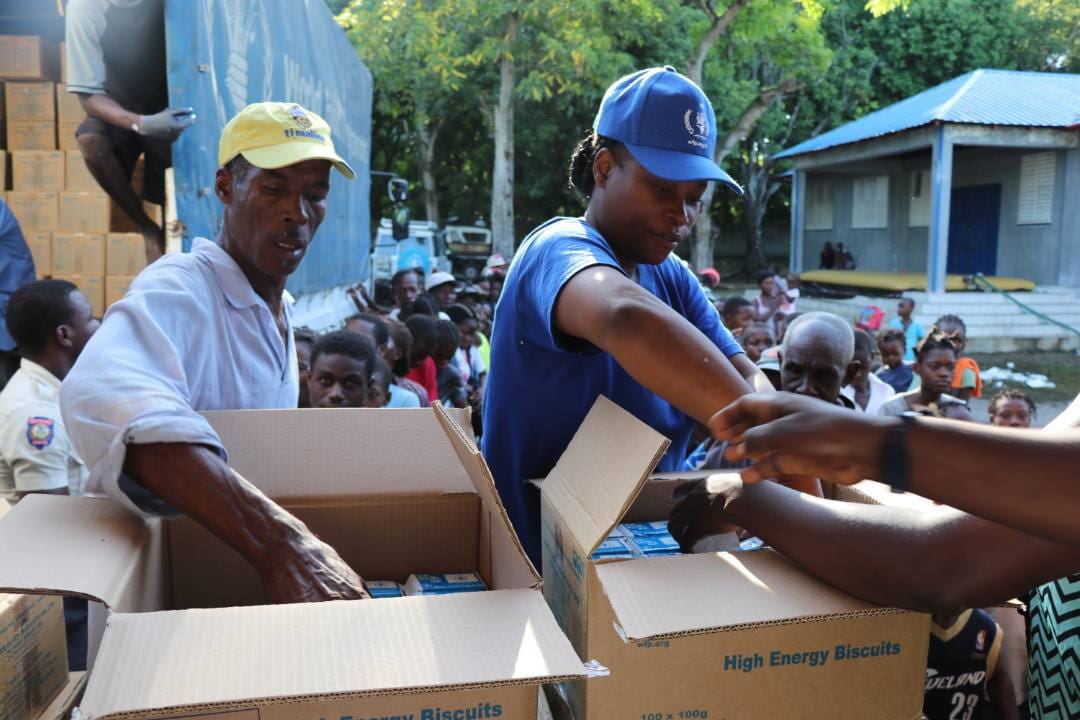
What WFP Delivers: High-Energy Biscuits
When Hurricane Irma was just days from making landfall in the Caribbean, a special shipment of food and supplies was headed to Haiti from a humanitarian response depot in Dubai.
What exactly was inside? Enough high-energy biscuits (HEBs) to feed 80,000 people in Irma’s path for four days.
When natural disasters like Irma strike, people who live in heavily damaged areas often can’t find food in the aftermath. Cooking facilities are typically scarce, making hunger the first emergency. It requires the World Food Programme (WFP) to execute a context-specific, immediate intervention to reconnect people in crisis with food.
That’s where HEBs come in. These wheat-based, ready-to-eat biscuits are fortified and shelf-stable, packing a nutrition-filled punch. Because they’re pre-packaged and compact, HEBs are easily shipped, stored and distributed — providing immediate nutrition for a child or adult without the need for water or cooking.
“These are things that keep you alive in a disaster,” said WFP spokesperson Bettina Luescher. “When people don’t have homes anymore … they can’t cook anymore, we’re bringing in these high-energy biscuits. 450 calories, a couple of these biscuits, and you’re set for the day.”
Shortly after Irma made landfall, WFP began delivering these biscuits in the towns of Fort Liberté and Ouanaminthe in northeast Haiti to families living in shelters after they were displaced by the storm. Across the region, WFP provided over 66,000 pounds of HEBs to islands in the eastern Caribbean — enough to feed more than 17,000 people for three days — and over 22,000 pounds of HEBs to the western Caribbean — enough to help 8,500 people.

WFP/Lorene Didier
A few years ago, WFP worked with porters in the Himalayas to distribute HEBs after twin earthquakes hit Nepal in 2015. The disaster left more than 3 million people homeless , and hundreds of thousands of schools and hospitals disappeared in a matter of minutes.

WFP/Marco Frattini
More than 25,000 porters helped WFP respond. Some walked for days on end to deliver HEBs to hungry families located deep within the mountain range as WFP mobilized additional efforts to provide emergency food assistance.
When it comes to solving global hunger, WFP relies on the right food at the right time — and your support to make it happen.
Learn more about the different types of food WFP delivers.




